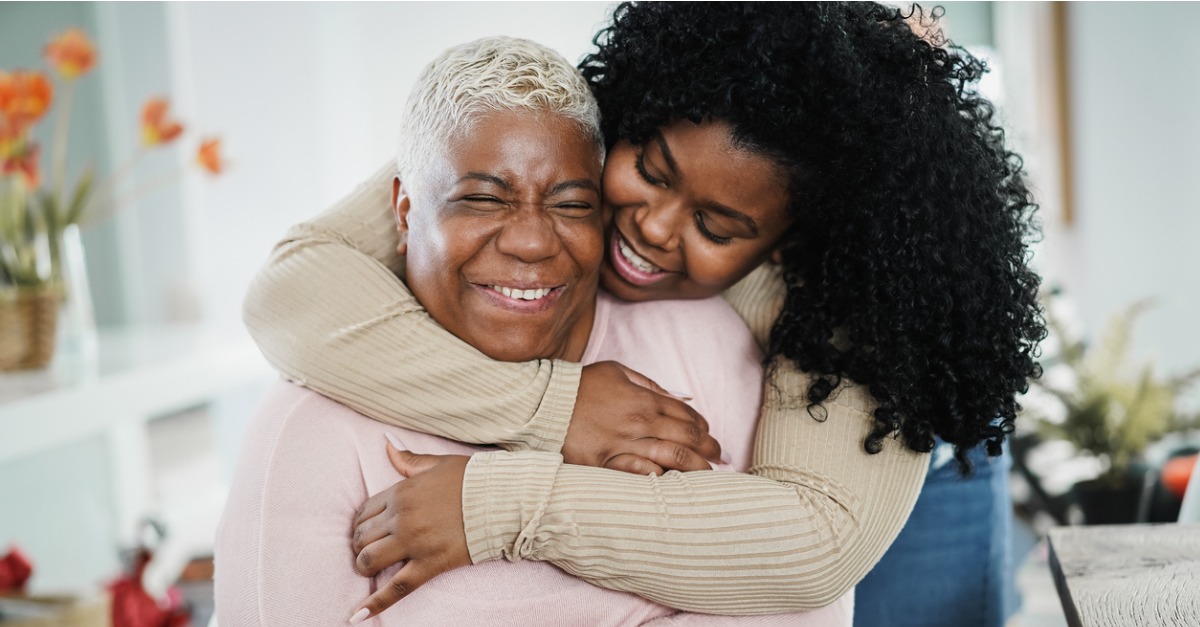A mammogram screening is relatively quick — a technician will help press each breast between two smooth plates, and then take images using low-dose X-rays.
But the potential discomfort of this process may tempt women to avoid them. Dr. Rebecca C. Yang, the director of the breast center at Lahey Health acknowledged to the Boston Globe that she knows patients who skip mammograms because of the potential pain. “They could be missing an early detected breast cancer that could be a curable breast cancer,” she said, “because the experience [of the mammogram] was so bad.”
But despite their brief, potential discomfort, mammograms are the best way to detect breast cancer at its most treatable stage. For Breast Cancer Awareness month, here are some things to focus on if someone you love is hesitant.
Early Detection = Early Treatment
Early detection of abnormalities means breast cancer can be diagnosed and treated sooner. Patients diagnosed with breast cancer early have a 96% 5-year survival rate.
Dr. Sarah Zeb, breast imaging specialist at Johns Hopkins Medical Imaging assures: “Having a mammogram every year increases the chance of detecting the cancer when it is small and when it is most easily treated which also improves survival.”
Reduce Screening Confusion
Understanding when and how often to receive a mammogram can be a puzzle. We recommend discussing screenings with your doctor as you approach your 40th birthday. Together, you can review the American Cancer Society’s guidelines, which advise women between the ages of 45 and 54 receive mammograms every year, and those over 55 every 2 years. Depending on your family history of breast cancer, your doctor may advise screening sooner, which is why an early conversation is important.
Find Comfort in Numbers
When it comes to mammograms, the numbers are on your side. While about 10% of patients will be called back for further testing, only about 0.5 percent of these re-screenings result in a cancer diagnosis.
Mammogram screenings also have an average accuracy of about 78%. While some may be concerned about receiving a “false positive,” many experts —including those at breastcancer.org— assert that regular mammography is still the best method for early detection.
Share Similar Experiences
Social media is a great place to find those in similar situations. Online posts from others can help women become familiar with the process, and find camaraderie together.
Jennifer Garner shared her own experience on Instagram, for example, captioning the cheery video with, “I know it’s scary, sisters, but just do it – the next best thing to an all-clear is early detection.” Similarly, Sofia Vergara snapped a pic at her mammogram appointment, captioning her reluctant photo with hashtags #allgood #dontforgetyours.
Sharing experiences like these, as well as your own, can remind your loved one that she’s connected to other women all around the world.
Keep Up the Conversation
Staying silent about our fears can make them grow. Be an active listener to their concerns. Encourage journaling if they aren’t quite ready to talk about it. Anxieties often feel bigger in our minds, but become smaller once we express them.
Above all be a hand to hold throughout. Offer to go with them to the appointment, or to meet afterward. There are a lot of unknowns in women’s minds around mammograms, and your consistency can keep them grounded throughout the process.
Next Steps
For more information about mammograms in Raleigh, NC, or to schedule an appointment, contact Cardinal Points Imaging. Our professionals are dedicated to providing you with a comfortable and smooth mammogram experience to ease your anxieties. Visit our website for an appointment, or call us at (919) 877-5400.

